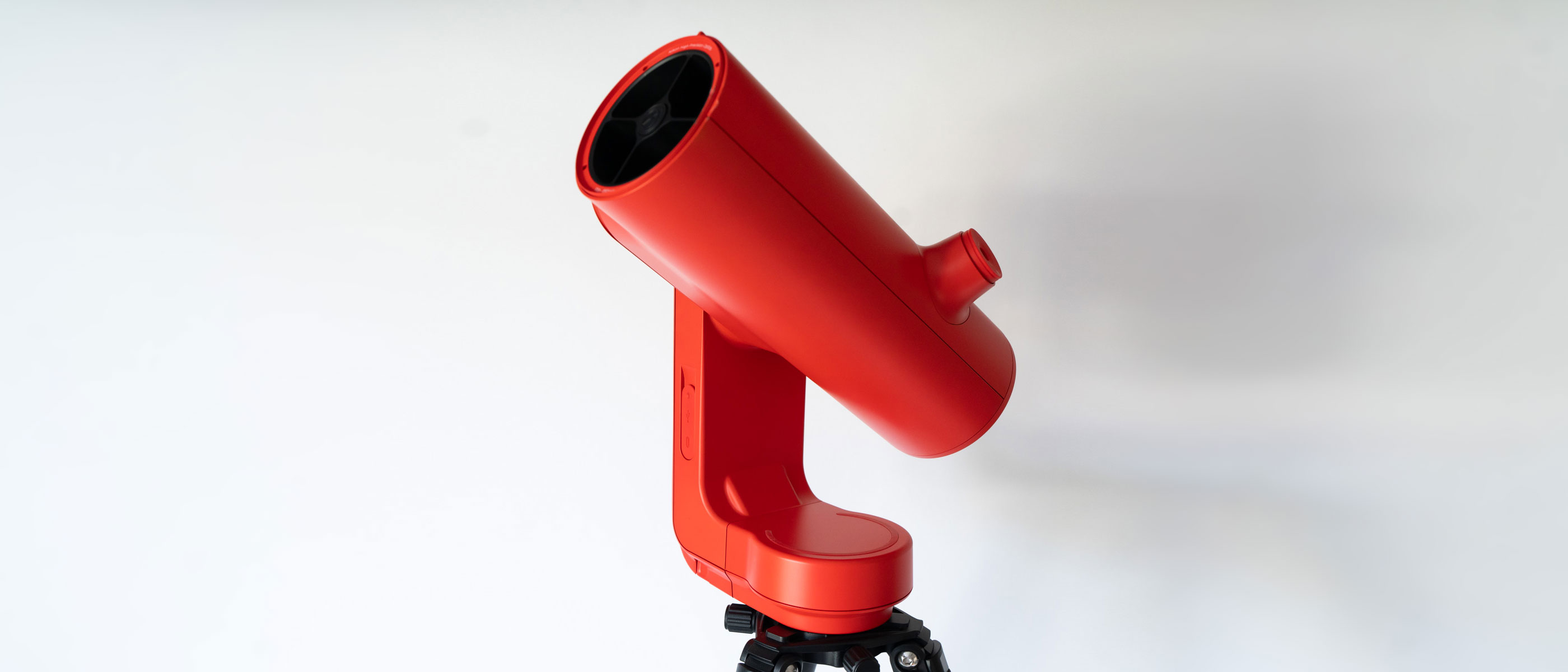Space Verdict
Unistellar's smaller smart telescope serves astronomers that want an all-in-one solution for viewing and imaging the night sky, but with lower financial outlay and in a smaller form factor that its existing models.
Pros
- +
Smaller form factor stores easier
- +
Lighter than eVscope 2 and eQuinox 2
- +
Great for nebulas and star clusters
- +
Very quiet in operation
Cons
- -
Not ideal for planetary viewing
- -
Sometimes struggles with orientation
Why you can trust Space.com
The Unistellar Odyssey and Odyssey Pro (including the red edition) are the latest in a more accessible range of smart telescopes from Unistellar. Smaller, lighter and with even more fully automated controls, astronomers need to do little else than set it up with a mobile device and operate it seamlessly via the app. After our testing we're naming it one of the Best telescopes for beginners and one of the Best smart telescopes, too.
The Odyssey, Unistellar's cheapest smart telescope sits at the bottom of the now four-strong current line-up of telescopes at $2299 MSRP (£1999GBP) the Odyssey Pro is $3999 (£3499GBP) and if you want the Pro in red that'll set you back another $500 at $4499 (£3999GBP).
I've reviewed the Odyssey Pro here, tested both in black and red with identical results from each variant. But what does the Odyssey Pro give you above the standard Odyssey? That'll be the eyepiece, jointly developed with camera and lens manufacturer Nikon. This is a digital eyepiece (a tiny screen) and reflects an identical view that you get in the mobile app. Other than that, these models are identical, according to Unistellar.
While the 'expert' range of Unistellar's telescopes (the eVscope 2 and eQuinox 2) telescopes aim to fulfil the higher end markets (they cost more and require collimation and manual focusing) the Odyssey is almost exactly the same price as the eQuinox 2, but features a shorter focal length and is lighter. From what we can see the Odyssey largely replicates the eQuinox 2's performance but don't take my word for it, let's take a look at the testing results.
Unistellar Odyssey review
Unistellar Odyssey: Design

- Much shorter than the eVscope II and eQuinox II
- Lighter than other Unistellar telescope models
- Unistellar app could do with some improvements
As aforementioned, I've tested the Odyssey Pro here which is identical to the cheaper Odyssey except it features a digital eyepiece that was jointly developed with Nikon.
Unistellar currently have four other telescope models on the market, the older eVscope and eQuinox models and the newer eVscope II and eQuinox II models, all of which are much longer and heavier than the newest Odyssey line. The benefit of opting for the Odyssey and Odyssey Pro models lies largely in their physical design.
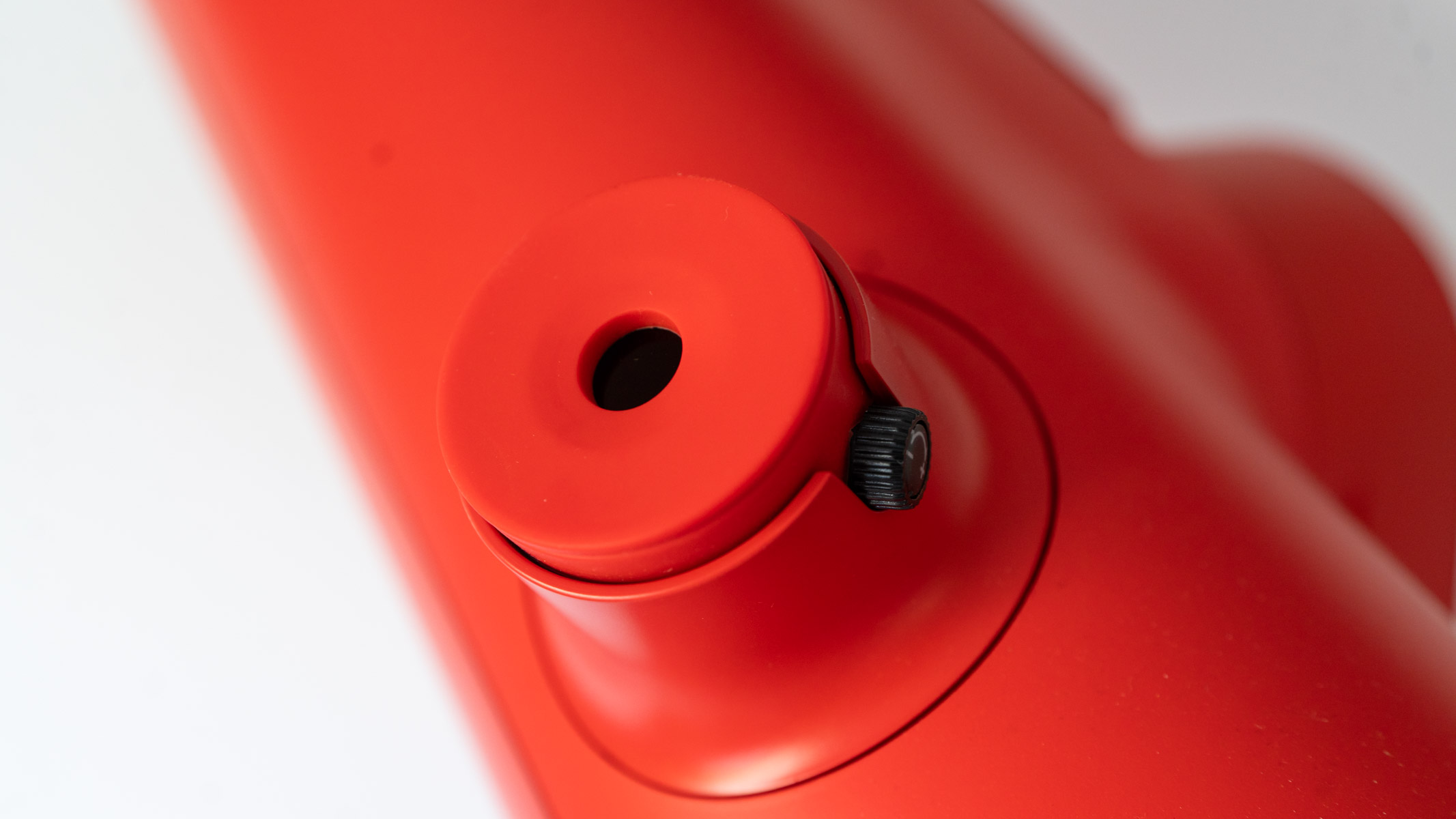
Take a look at the table below to compare all four current smart telescope models from Unistellar and you'll see that the Odyssey is 7.7 lbs lighter than the eQuinox 2 and eVscope 2 and its Optical Tube Assembly (OTA) is 219 mm (8.6-inches) shorter, too. In real life I found that the Odyssey Pro felt even lighter again, so I decided to weigh it on digital scales. With the telescope mounted to the tripod and with the end cap left off the whole assembly came to 13.2 lbs, which was over a pound lighter than Unistellar's-stated 14.3 lbs when fully combined.

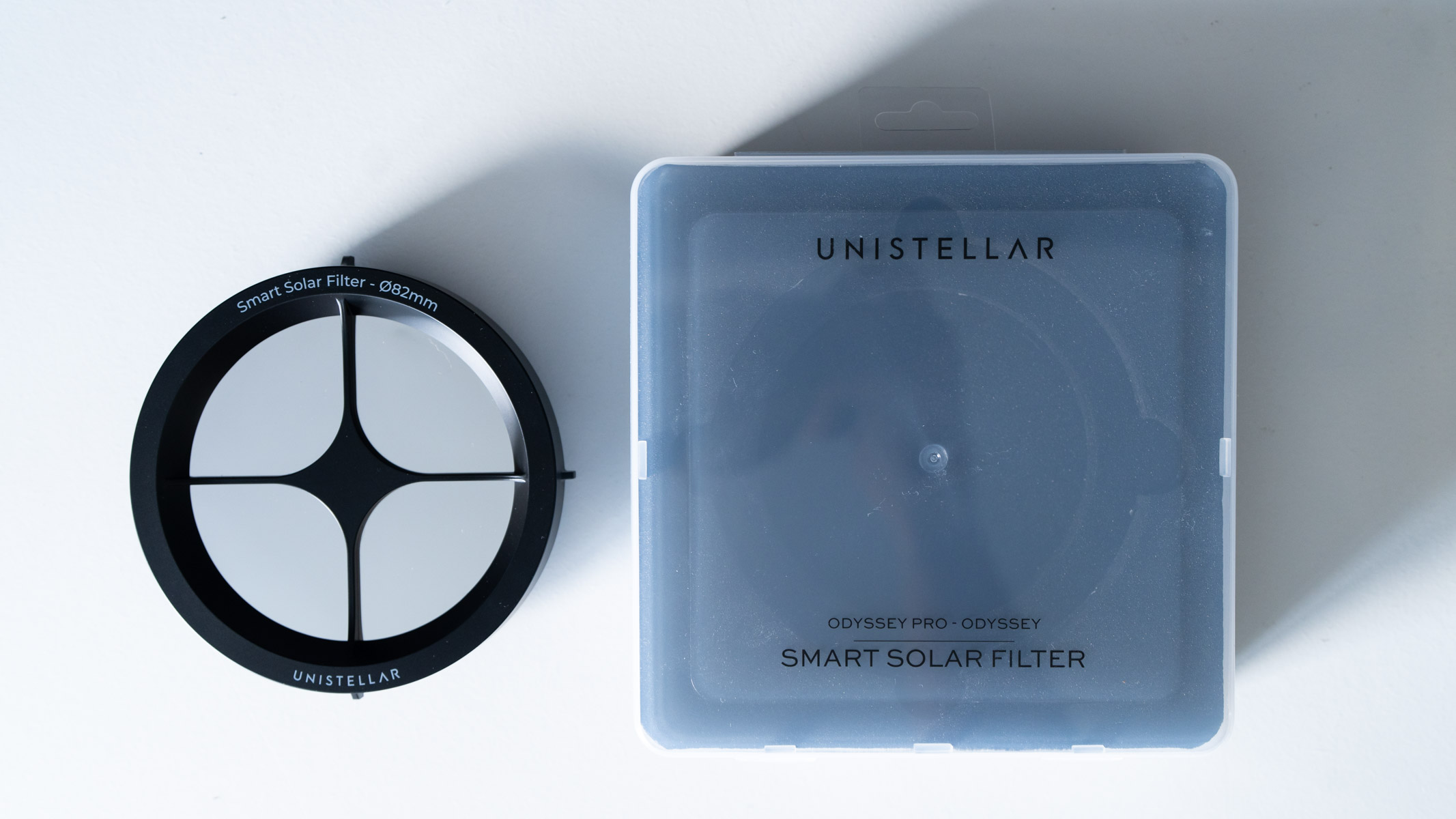
Image resolution: 4.1 MP
Focal length: 320 mm
Storage: 64 GB
Field of view: 33.6 x 45 arcmin
Mount: Motorized Alt-azimuth
Limiting magnitude: 17.2
Battery: 5 hrs
Mirror diameter: 85 mm
Weight: 8.8 lbs (4 kg)
But take a closer look at the Odyssey line and you'll see there are fewer telescope controls as well. Gone is the focusing wheel on the rear of the OTA, as is the horizontal and vertical collimation adjustment screws. That's because the focusing and collimation is now all automated inside the Odyssey telescope. This appeals to beginner astronomers more than veterans because it removes the last of the manual adjustments that can be made to Unistellar's smart telescopes.
In theory this fully automated practice reduces user input or knowledge and lets us spend more time observing and photographing the heavens. In practice though, things can be different, as I found out myself when the first model arrived with me in early 2024, more on that later.

Unistellar smart telescopes comparison
| Header Cell - Column 0 | Odyssey | Odyssey Pro | eQuinox 2 | eVscope 2 |
|---|---|---|---|---|
| Size (mm) | 431 x 204 x 134 | 431 x 204 x 134 | 650 x 190 x 230 | 650 x 190 x 230 |
| Weight | 8.8 lbs (4 kg) | 8.8 lbs (4 kg) | 15.5 lbs (7 kg) | 15.5 lbs (7 kg) |
| Aperture (mm) | 85 | 85 | 114 | 114 |
| Focal length (mm) | 320 | 320 | 450 | 450 |
| Focal ratio | f/3.9 | f/3.9 | f/4 | f/4 |
| Price | $2299 | $3999 | $2499 | $4899 |
| Row 6 - Cell 0 | Row 6 - Cell 1 | Row 6 - Cell 2 | Row 6 - Cell 3 | Row 6 - Cell 4 |

Unistellar Odyssey: Performance




- 'Enhanced' views look just as good as the premium models
- Gorgeous nebulas and star cluster views
- Good color rendition and noise suppression
When I received my first Odyssey (a black Odyssey Pro) model back in early 2024 I was impressed with how fast everything was to set up. The solid Unistellar tripod that I'm used to hasn't changed much and that great, slotted motorized single fork arm still held the Optical Tube Assembly firm.
Yes, the eQuinox II and eVscope II have a longer focal length, a slightly (0.1) larger focal ratio and bigger mirror diameter, but when it comes down to taking astrophotographs at night with these telescopes (and I've tested all of them) there isn't a huge difference between them. Especially once I engaged the 'enhanced' view on the app, which seeks to produce a better quality composite image from multiple light and dark frames in real-time.
I was really impressed with the detail and color of nebulas, even from the edge of town where sky glow from light pollution restricts views to just the basic constellations. This is owed mostly to Unistellar's proprietary light pollution and noise-handling 'Deep Dark Technology' which powers all current models. Through successive color and noise removal during observations all of our orange sky glow was removed from views and even some white flare from nearby LED street lamps was limited, despite seeing the shadows of it cast across the buildings around me.


For example, the ionized gases of the M57 the Ring nebula gave a beautiful burst of blue from the center and clearly shows its distinct orange halo, demonstrating how well even subtle colors like that can punch through even in towns.
I could see how well the Odyssey Pro handled the noise when slewing to M13, the Hercules globular cluster. Even in the fainter sections of this Messier objects the dimmer stars can be seen with clarity. This is a testament to the noise-supression algorithms in the telescope, because in my experience many of the subtler stars and finer details can be lost when removing noise manually in post-production image editing software.

Solar observations fared just as well as the eQuinox 2 that I previously tested and that Space.com's my colleague Brett Tingley (Managing Editor at Space.com) tested during the great North American total solar eclipse 2024. The Odyssey Pro provided a full frame, solid exposures of the midday sun and enough detail to not just see sun spots but also pick out detail in them.
The great part about observing the sun with the Odyssey Pro was that we could view images in a shaded area like the shadow of a building or even in the car, to ensure that exposures were bright, alignment was spot-on and to look for pesky stratus cloud that can occasionally occlude viewing without being visible with the naked eye. Remember: NEVER LOOK AT THE SUN WITHOUT CERTIFIED SOLAR FILTRATION.
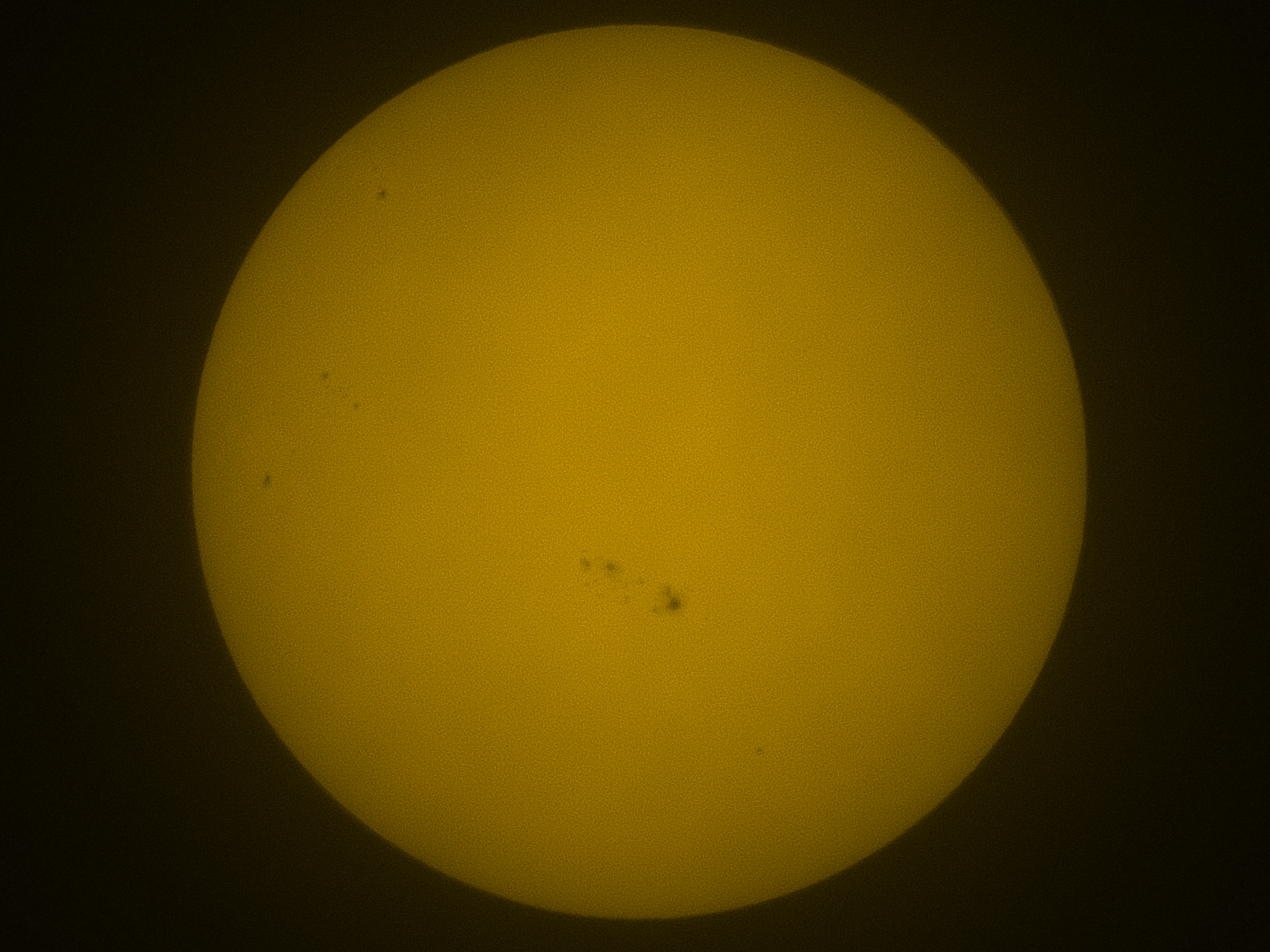
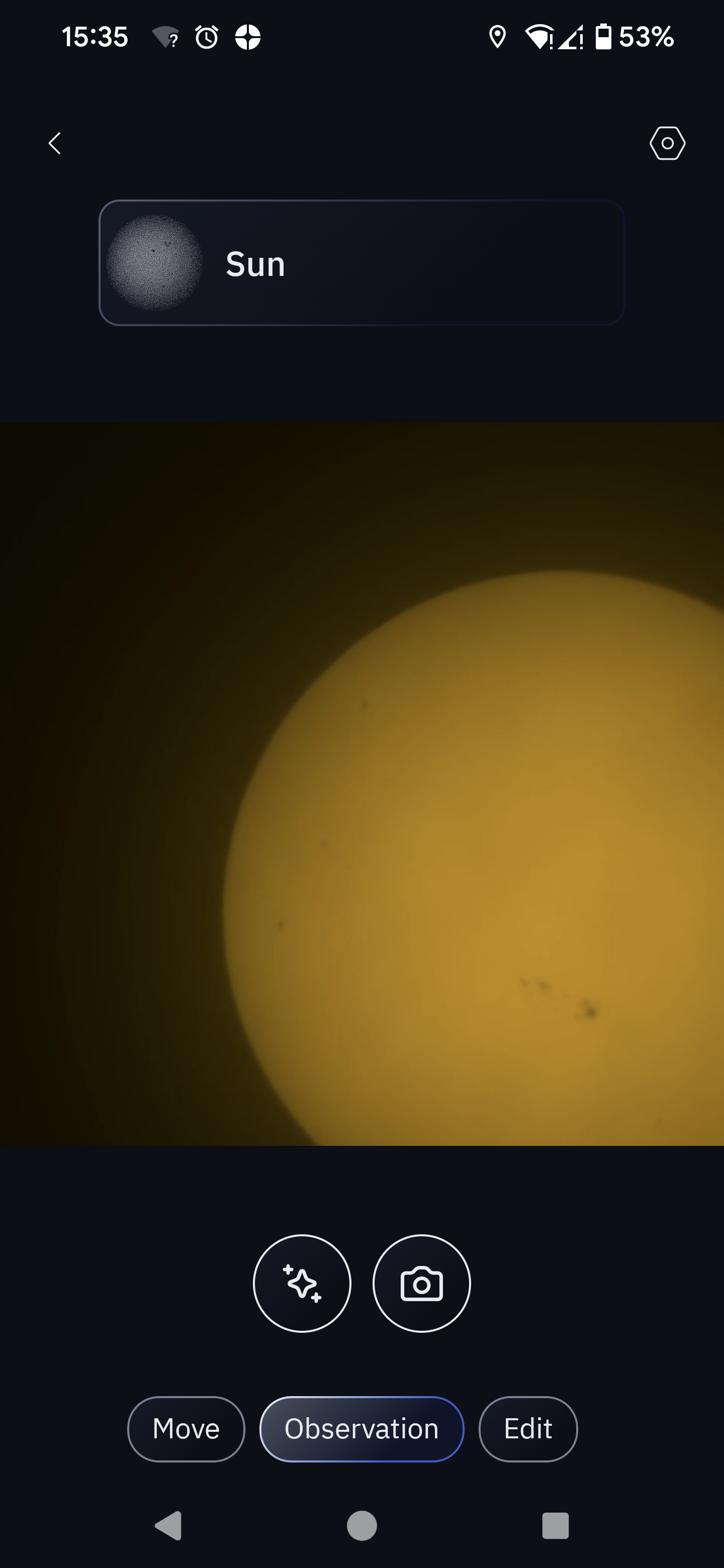
Unistellar Odyssey: Functionality




- Early models had problem with focusing
- Lack of manual controls sometimes makes me feel uneasy
- Unistellar app is fast and smooth, but not without its hitches
Booting up the Unistellar app on my smartphone connection was smooth and swift with no sign of a hitch. That is, until I started viewing my first targets.
Every image was coming out defocused and blurry. After rebooting my smartphone, reinstalling the app, rebooting the telescope, resetting the telescope, the Odyssey Pro was still giving me blurry scenes of otherwise well-exposed night sky targets. "If only I had a focusing wheel on the back of the OTA" I thought to myself.
This one thought really hits home the point to me that while I'm all up for a fully automated system that makes night sky observations easier, faster and gets those of us who love space into the community without a hitch, when things go wrong they are increasingly unfixable by the owner alone.
After reaching out to Unistellar for their thoughts, and after testing from their Research Department, they pointed out that it affected a small number of early models which had now been recalled for fixing. But it did set up an uneasy precedent that, now it's happened to me, I'd rather opt for a telescope with a focusing wheel and collimation controls at the very least.




I must admit, I am still a little disappointed with a few things that Unistellar seems not to have got right with these smart telescopes yet and it lies mainly with their app. For example, when packing up from observing for the night if I turned off the Odyssey Pro the telescope would simply blink out its LEDs and power off, remaining the position I was last observing with.
This is no good for storage either in its box or the optional backpack and can only be remedied by powering the telescope back on and 'parking' it on the app. Which, when you forget to do it in the first place, takes another few minutes at the end of your night to sort out when sometimes all you want to do is hit the hay. If the be-all end-all of the Odyssey Pro is to go fully autonomous, why doesn't the telescope 'park' itself when I switch it off? Or at least give me the option to do this by default from the app, or let me manually slew it back into position to store it (don't force it like I've seen others do, you could break the motor or the assembly!).
Another thing is the teeny tiny little typos I spot through the app and Unistellar literature. I've spotted a few in the past but the most obvious current typo can be seen when viewing images taken with the telescope in the gallery. Click on an image, then click 'Information' and file size is listed as 'Weight'. It's not a huge deal, but us astronomers pay close attention to the little details, so it's a niggle that won't go away. You can also see it in the manual, check page 4 to find gigabytes (GB) written as 'Go'.
Should you buy the Unistellar Odyssey?
✅ You like automation: Focusing, collimation, navigating the night sky and taking multiple processed images can be done automatically.
✅ You need portability: This is the smallest smart telescope that Unistellar currently offer.
❌ You like customization: As far as we can tell there are no options to customize these telescopes.
❌ You prefer traditional telescopes: These telescopes give a digital-only view of the night sky, so if you like observing without a screen these telescopes are not for you.
If you want to get a smart telescope that literally does every part of the stargazing experience autonomously but don't want to drop $4000+ on a device, then the Unistellar Odyssey is probably the right choice for you. Pay another $1000 and get the Odyssey Pro if you want the Nikon eyepiece (we wouldn't bother because it's a digital eyepiece which seemingly replicates what's on your mobile device) and you need to save space and weight compared with the larger, heavier eVscope II and eQuinox II smart telescopes.
It'll cut through most of the worst light pollution in your area, get you up and running in minutes and is good for personal quick observations or for stargazing parties with minimal fuss. It's not one for purists (unless that purist is impatient) but it does remove the need to buy an astrocam and associated paraphernalia to get set up for imaging. Slick, minimalist, but smaller than the others in Unistellar's line-up, the Odyssey and Odyssey Pro are a good option for those who just want to get cracking. Though, I think you should get the red one because it's cooler, but only if you have an extra $400 kicking around in your bank account.
If the Unistellar Odyssey isn't for you
Want to stick with a smart telescope but want something a bit cheaper? I actually think you couldn't do much better than the Vaonis Vespera II which I rated 5/5 stars in my review earlier this year. It's astoundingly detailed, about the same size as the Odyssey (though not the same shape) and costs less, too.
There's a lot to love about this compact smart telescope but we understand that full automation and limited customization isn't for everyone. Instead, we'd recommend either the Celestron NexStar 8SE which is a powerful catadioptric with wide scope for additional high-end eyepieces and other accessories, or if you're happy dropping a little more money than you would on the Odyssey or Odyssey Pro, go for the even better Celestron Advanced VX 8 EdgeHD which we gave 5/5 stars in our review.
Join our Space Forums to keep talking space on the latest missions, night sky and more! And if you have a news tip, correction or comment, let us know at: community@space.com.

Jase Parnell-Brookes is the Managing Editor for e-commerce for Space and Live Science. Previously the Channel Editor for Cameras and Skywatching at Space, Jase has been an editor and contributing expert across a wide range of publications since 2010. Based in the UK, they are also an award-winning photographer and educator winning the Gold Prize award in the Nikon Photo Contest 2018/19 and named Digital Photographer of the Year in 2014. After completing their Masters degree in 2011 and qualifying as a teacher in 2012, Jase has spent the last two decades studying and working in photography and publishing in multiple areas, and specializes in low light optics and camera systems.
-
bwana4swahili Reply
Go with a Vespera II or Pro from Vaonis and get a solid smart telescope.Admin said:The Unistellar Odyssey and Odyssey Pro smart telescopes are the smallest and lightest reflector telescopes the company has to offer.
Unistellar Odyssey review : Read more
